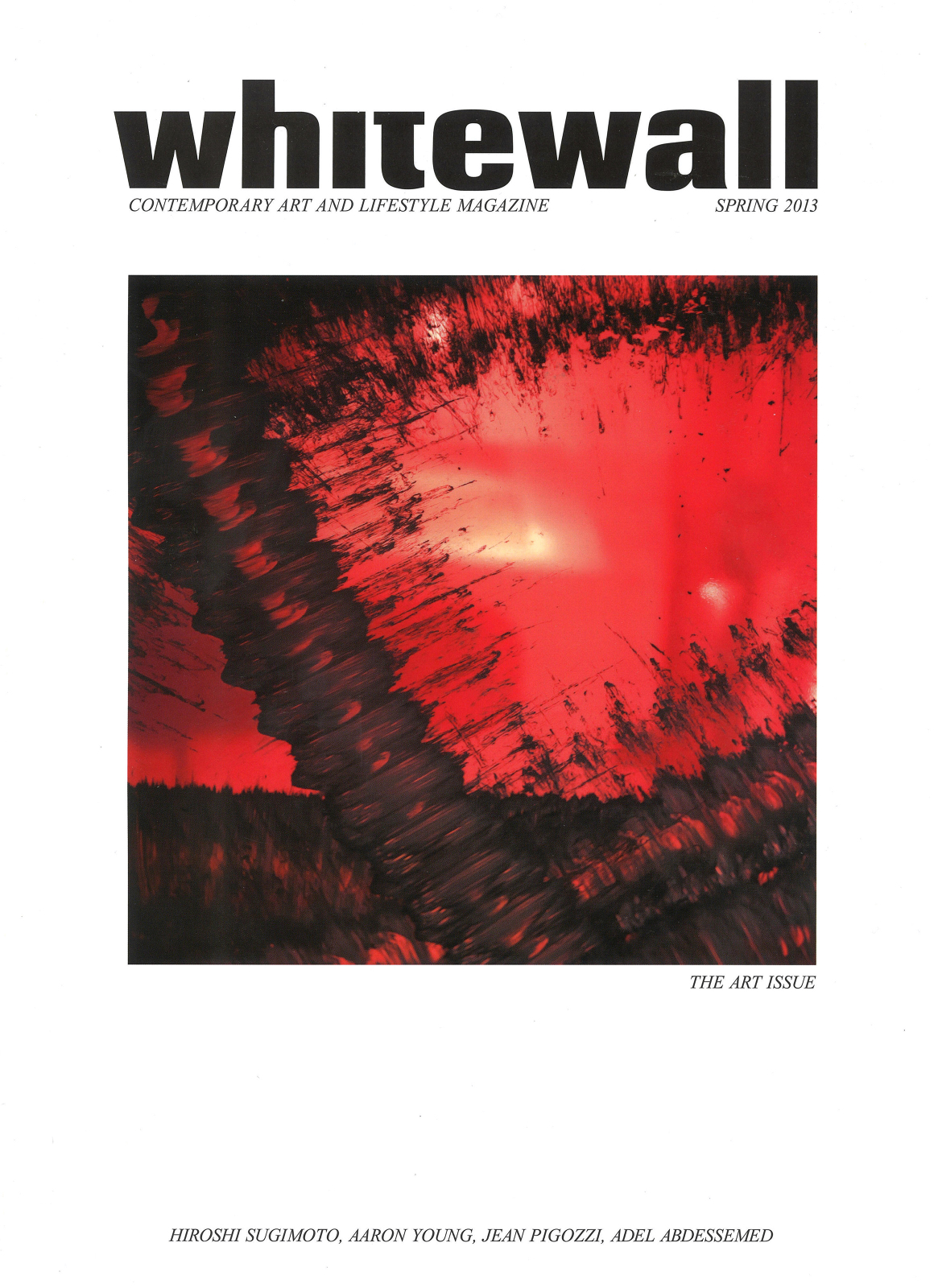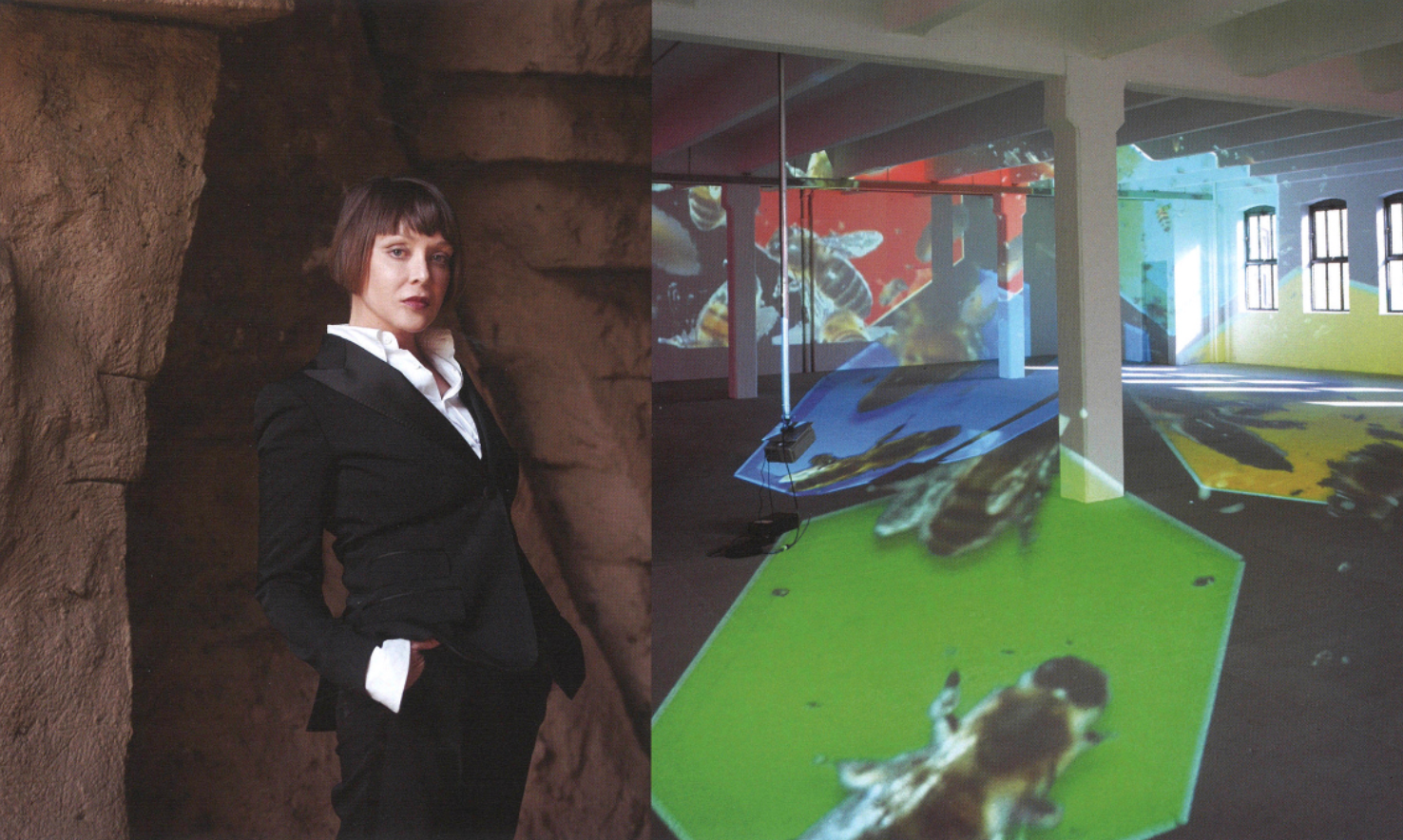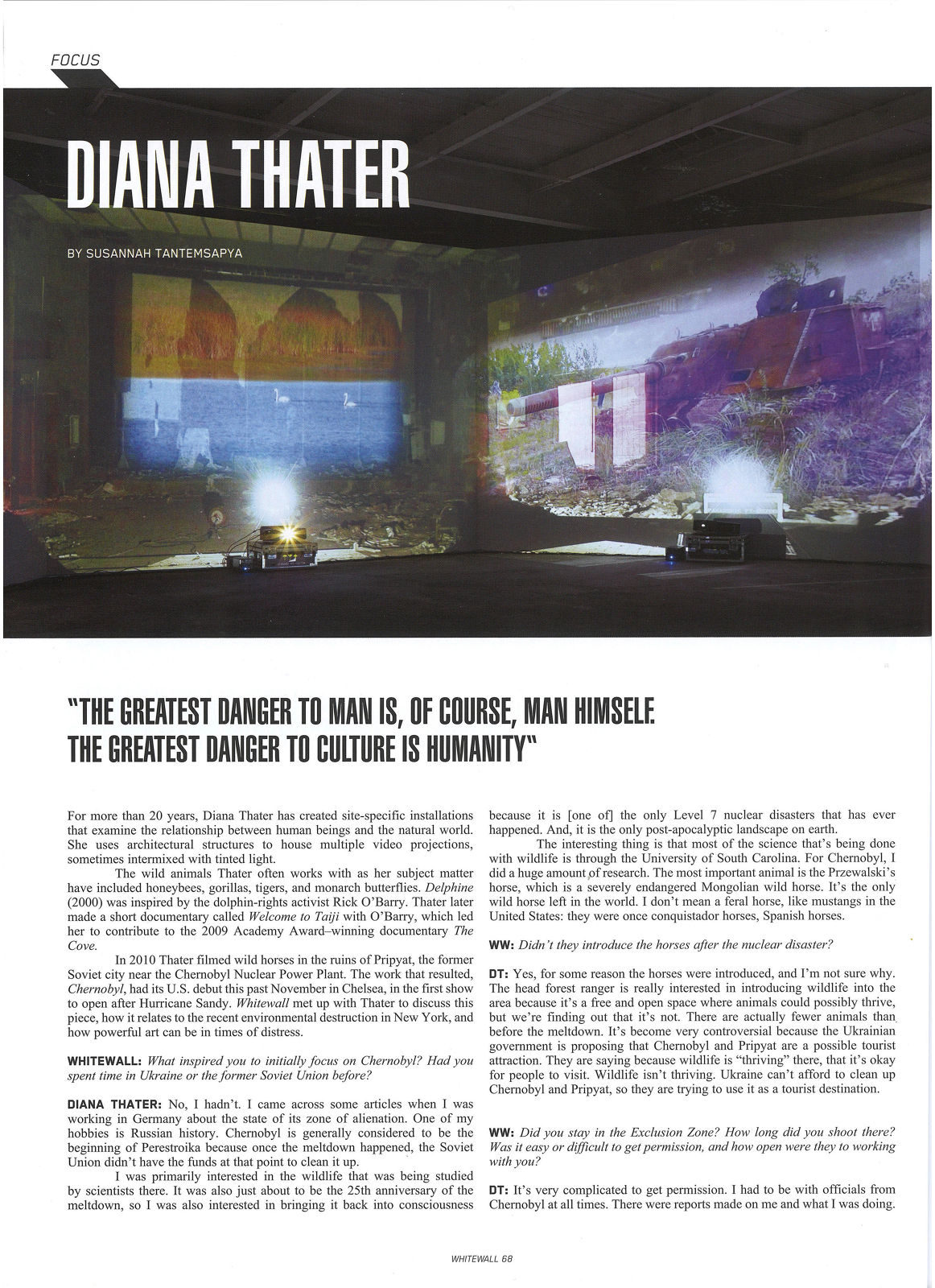Diane Thater
by Susannah Tantemsapya
Whitewall Magazine - The Art Issue
(Spring 2013)

For more than 20 years, Diana Thater has created site-specific installations that examine the relationship between human beings and the natural world. She uses architectural structures to house multiple video projections, sometimes intermixed with tinted light.
The wild animals Thater often works with as her subject matter have included honeybees, gorillas, tigers, and monarch butterflies. Delphine (2000) was inspired by the dolphin-rights activist Rick O’Barry. Thater later made a short documentary called “Welcome to Taiji” with O’Barry, which led her to contribute to the 2009 Academy Award–winning documentary “The Cove.”
In 2010 Thater filmed wild horses in the ruins of Pripyat, the former Soviet city near the Chernobyl Nuclear Power Plant. The work that resulted, Chernobyl, had its U.S. debut this past November in Chelsea, in the first show to open after Hurricane Sandy. Whitewall met up with Thater to discuss this piece, how it relates to the recent environmental destruction in New York, and how powerful art can be in times of distress.
WHITEWALL: What inspired you to initially focus on Chernobyl? Had you spent time in Ukraine or the former Soviet Union before?
Diana Thater:
No, I hadn’t. I came across some articles when I was working in Germany about the state of its zone of alienation. One of my hobbies is Russian history. Chernobyl is generally considered to be the beginning of Perestroika because once the meltdown happened, the Soviet Union didn’t have the funds at that point to clean it up.
I was primarily interested in the wildlife that was being studied by scientists there. It was also just about to be the 25th anniversary of the meltdown, so I was also interested in bringing it back into consciousness because it is [one of] the only Level 7 nuclear disasters that has ever happened. And, it is the only post-apocalyptic landscape on earth.
The interesting thing is that most of the science that’s being done with wildlife is through the University of South Carolina. For Chernobyl, I did a huge amount of research. The most important animal is the Przewalski’s horse, which is a severely endangered Mongolian wild horse. It’s the only wild horse left in the world. I don’t mean a feral horse, like mustangs in the United States: they were once conquistador horses, Spanish horses.
WW: Didn’t they introduce the horses after the nuclear disaster?
DT: Yes, for some reason the horses were introduced, and I’m not sure why. The head forest ranger is really interested in introducing wildlife into the area because it’s a free and open space where animals could possibly thrive, but we’re finding out that it’s not. There are actually fewer animals than before the meltdown. It’s become very controversial because the Ukrainian government is proposing that Chernobyl and Pripyat are a possible tourist attraction. They are saying because wildlife is “thriving” there, that it’s okay for people to visit. Wildlife isn’t thriving. Ukraine can’t afford to clean up Chernobyl and Pripyat, so they are trying to use it as a tourist destination.
WW: Did you stay in the Exclusion Zone? How long did you shoot there? Was it easy or difficult to get permission, and how open were they to working with you?
DT: It’s very complicated to get permission. I had to be with officials from Chernobyl at all times. There were reports made on me and what I was doing. There’s also former KGB there who are now the Ukrainian secret police. I had to hide my cameras a lot. There are a lot of things that you can’t film — they kept a close watch on me. It was difficult. I stayed in the Exclusion Zone in a place that the scientists called the “Chernobyl Hilton,” a prefab building made out of trailers. I was there for a week and my crew stayed there with me. It was quite the experience [laughs].
WW: There are parts that no one can access because of danger?
DT: The Red Forest is the most radiated place on earth. It’s called that because when the meltdown happened, the wind was blowing in a particular direction, and turned one whole side of all the trees red, almost like a burn. You can’t go into the Red Forest without full gear. So, I couldn’t go into there, but I filmed it [laughs]. There were a lot of places I wasn’t supposed to be because they were dangerous, but I went in for brief amounts of time.

WW: Who are the figures in the installation videos?
DT: It’s my crew. It’s pretty deserted. The only people actually there are the workers who continually surge up the power [of] what’s called the sarcophagus around Reactor 4. So you will see me filming, and then on the opposite screen you will see what I was filming. And you will see my assistant filming, and then on another screen you will see what he was filming. He might be filming me, I might be filming him, and all four of those images would be up at the same time.
WW: What was the reaction from the audience in Chelsea after Hurricane Sandy? How did the crowd relate to what had just happened — especially at David Zwirner, one of the hardest-hit galleries in the area?
DT: I did the show in the space of a week. I was supposed to do it in January 2013. David Zwirner thought Chernobyl would resonate with the destruction that had happened in Chelsea. Of course, neither he nor I would compare a nuclear disaster to a hurricane.
The response was generally overwhelming because people were excited to see art. They weren’t mourning the loss of income or of the market; what they were mourning was the loss of art. Everyone lost art. The response was so positive, even though the show was really dark — philosophically or in terms of humanity. It was packed. Afterward, David had a huge party for all the galleries that were hard-hit. It was the first show that opened after the hurricane, so the response was amazing.

WW:WW: How has the meaning of the Chernobyl project changed from its conception?
DT:
When I start working, I don’t know what kind of meaning I’m about to make. I didn’t really know what I was going to do when I went in. When I saw it in Chelsea, I realized how important it is to see what real human destruction looks like. The greatest danger to man is, of course, man himself. The greatest danger to culture is humanity. I was really interested in people’s response to that. The greatest danger to culture in New York at that time was the hurricane.
It was this moment of hope, not cynicism around art. That was very important to me: something I realized about my work, the piece and why my work is important. I’m 50 years old, and I’m in this midcareer place, where a lot of the time you lose your momentum. To have that happen in this point of my life and this point in my work was really meaningful to me.
- Print -

